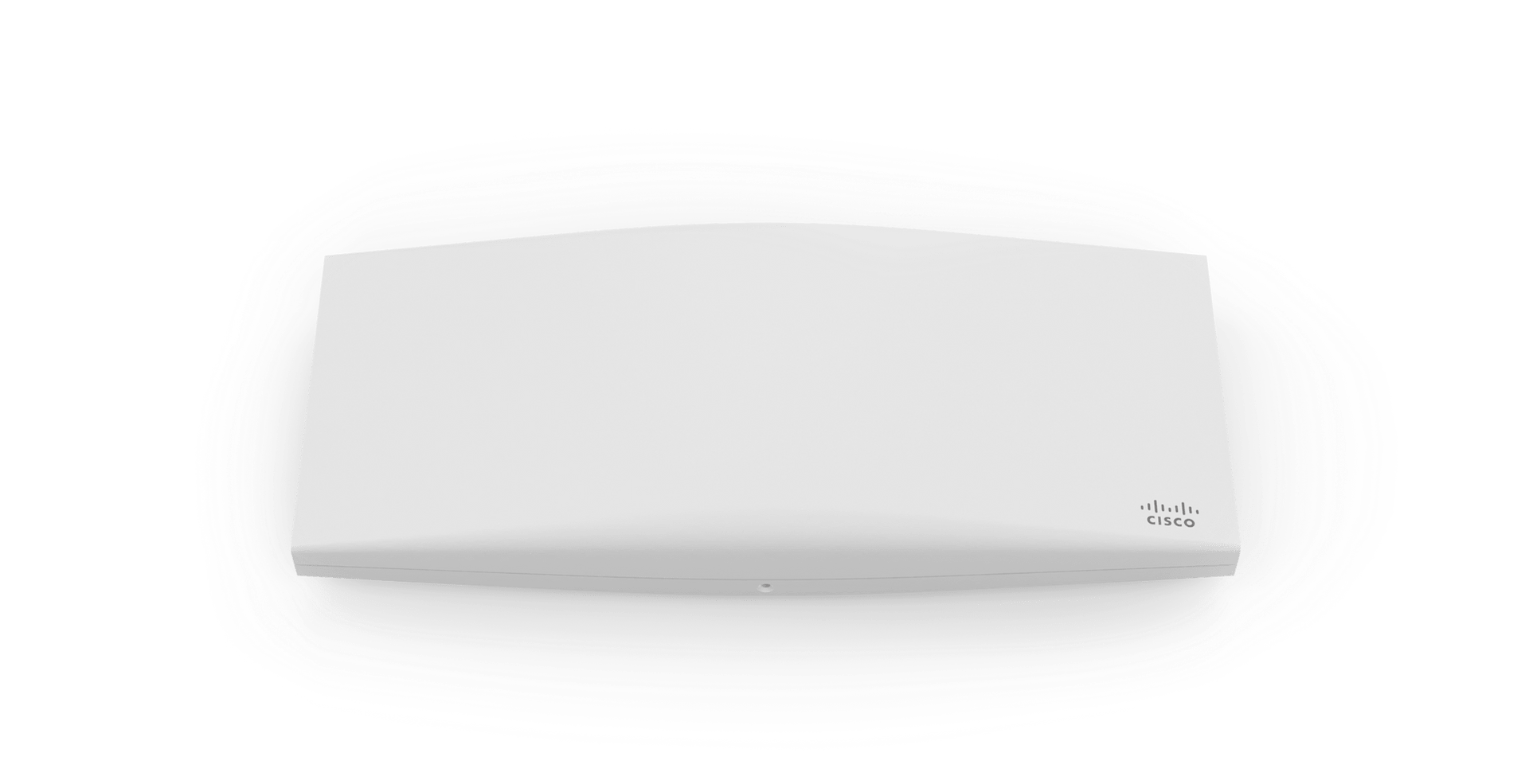
When it comes to choosing the right access point for your business, understanding the performance, features, and scalability of different models is key. Cisco Meraki offers an exceptional line of cloud-managed wireless access points designed to deliver enterprise-grade security, reliable performance, and Wi-Fi 6 technology. Two standout models in the Meraki MR series are the Meraki MR46 and Meraki MR56, both of which offer robust connectivity for various environments but with some notable differences in their capabilities.
In this article, we will compare the Meraki MR46 vs. MR56, analyzing their features, performance, and use cases to help businesses choose the most suitable access point for their needs.
The Meraki MR series is a family of cloud-managed wireless access points designed to provide high-performance connectivity for enterprise environments. These access points come equipped with advanced features such as Wi-Fi 6, MU-MIMO support, and enterprise-grade security. With the Meraki Cloud Management platform, IT administrators can easily manage network settings, troubleshoot issues, and ensure secure and efficient wireless coverage from a centralized location.
Whether deployed in high-density environments like offices, educational institutions, or mission-critical applications in healthcare and retail, the Meraki MR series has become a go-to solution for businesses seeking simple management, real-time WIDS/WIPS, and cloud-based monitoring.
The Meraki MR series is widely deployed in office spaces, schools, hospitals, and retail environments where secure, high-speed wireless connectivity is essential. Its ability to handle large numbers of devices and performance-intensive applications makes it a top choice for high-density deployments and enterprise environments.

The Meraki MR46 is designed to deliver reliable Wi-Fi 6 performance in medium-to-large environments. It features a 4×4:4 MU-MIMO configuration with beamforming capabilities, allowing for better wireless efficiency and increased device capacity. With a 3.0 Gbps max data rate and dual-radio design, the MR46 is capable of handling moderate traffic loads while maintaining strong network performance.
The MR46 supports Wi-Fi 6 (802.11ax), which includes advanced features like OFDMA, MU-MIMO, and BSS Coloring. These technologies are designed to improve network efficiency, particularly in high-density environments where many devices are connected simultaneously. The MR46 can deliver wireless performance that is both fast and reliable, making it suitable for medium-to-large enterprises that require dependable wireless coverage across their facilities.
Security is a core aspect of the MR46, with features like WPA3 encryption, automatic firmware updates, and integration with Cisco Umbrella for enhanced threat protection. The integrated radio allows for continuous WIDS/WIPS scanning, ensuring the network remains secure against potential wireless threats. Additionally, the MR46 supports up to four SSIDs for secure segmentation between guest access and corporate networks.
In real-world settings, the MR46 performs exceptionally well in office environments, schools, and retail locations. Its 4×4 MU-MIMO setup allows for optimal performance in environments with moderate device counts, making it ideal for businesses that don’t require ultra-high-density support but still need robust wireless connectivity for business applications.

The Meraki MR56 takes wireless performance to the next level with its 8×8:8 MU-MIMO configuration and dual 5 GHz radios. With a 5.4 Gbps max data rate, the MR56 is designed for ultra-high-density environments, making it perfect for large venues, conference centers, and other demanding networks. It includes 1x 5 Gbps multigigabit Ethernet port, providing fast wired connectivity for larger deployments.
Like the MR46, the MR56 supports Wi-Fi 6 (802.11ax) but offers enhanced features for larger, more performance-intensive applications. The MR56’s dual-radio design allows it to handle significantly more traffic and devices compared to the MR46, thanks to 8×8 MU-MIMO and OFDMA. This makes it highly suitable for environments where multiple users are streaming video, using virtual desktops, or handling other mission-critical applications.
The MR56 also includes advanced enterprise-grade security features such as WPA3 encryption, Layer 7 traffic management, and real-time WIDS/WIPS scanning. It is fully integrated with the Meraki Cloud Management platform, providing remote diagnostic tools, automatic reporting, and real-time network insights to ensure optimal performance and secure connectivity at all times.
The Meraki MR56 is ideal for large enterprises, conference centers, and high-density environments that require more substantial throughput and higher device capacity. With its advanced wireless capabilities and superior MU-MIMO performance, the MR56 can handle significantly more devices and higher traffic than the MR46.
When comparing the Meraki MR46 vs. MR56, one of the most noticeable differences is the radio configuration. The MR46 features a 4×4:4 MU-MIMO setup, while the MR56 offers a more powerful 8×8:8 MU-MIMO configuration, allowing it to handle higher traffic loads and more connected devices simultaneously. Additionally, the MR56 includes a 5 Gbps multigigabit Ethernet port, whereas the MR46 has a 2.5 Gbps Ethernet port, giving the MR56 an edge in terms of wired connectivity.
Both the MR46 and MR56 support Wi-Fi 6, but the MR56 is better equipped to handle ultra-high-density environments with its dual 5 GHz radios and higher data throughput. In scenarios with heavy device usage, such as conference rooms or auditoriums, the MR56 will deliver more stable connections and faster data transfer rates compared to the MR46.
The MR46 is a strong performer in medium-to-large environments, but the MR56 excels in handling high-density deployments with multiple devices connected simultaneously. The MR56’s dual-radio setup and higher aggregate frame rate make it better suited for environments where hundreds of devices are accessing the network simultaneously.
Both access points offer robust security features, including WPA3 encryption and real-time WIDS/WIPS scanning. However, the MR56’s superior processing power and radio capabilities make it a better choice for environments where security scanning and performance-intensive applications are critical.
The MR46 offers excellent scalability for medium-to-large deployments. It’s a great choice for businesses that need strong wireless network performance but don’t require the higher capacity offered by the MR56. The MR46 can support future network growth, but it may eventually face limitations in ultra-high-density scenarios.
The MR56 is more future-proof for large-scale, high-density deployments. Its 8×8:8 MU-MIMO configuration and dual 5 GHz radios make it a better long-term investment for businesses that anticipate growing wireless needs and more connected devices. The MR56 is designed to handle the future demands of Wi-Fi 6 technology and mission-critical applications.
For businesses looking to future-proof their network infrastructure, the MR56 offers better scalability and higher performance. While the MR46 is an excellent option for current wireless needs, the MR56 is more suited to environments with increasing demands for device capacity and high-density support.
The Meraki MR46 is a solid choice for businesses in office environments, schools, or retail spaces that need reliable Wi-Fi 6 connectivity without ultra-high-density support. It’s perfect for small-to-medium enterprises and locations where device counts are moderate, but performance is still critical.
The Meraki MR56 is ideal for large enterprises, conference centers, hospitals, and other high-density environments where hundreds of devices need simultaneous access. With its dual-radio setup and 8×8:8 MU-MIMO configuration, the MR56 is better suited for businesses that require superior wireless performance in environments with heavy network traffic.
For businesses looking to future-proof their wireless network and support high-demand applications, the MR56 is the clear choice. However, for those who need strong performance at a more affordable price, the MR46 offers an excellent balance of cost and capability.
Comparing Meraki MR46 vs. MR56, both access points deliver outstanding Wi-Fi 6 performance, but they are designed for different use cases. The MR46 is ideal for medium-to-large environments, while the MR56 is better suited for ultra-high-density environments with greater throughput and device capacity. Businesses should assess their current and future networking needs to determine which model is the best fit.
At Stratus Informational Systems, we specialize in helping businesses deploy Meraki access points to optimize their network infrastructure and ensure high-performance wireless connectivity for all environments. So, if you require professional assistance when deciding on Cisco Meraki access points, contact Stratus Informational Systems. We are here to help.

Stay informed about our newest releases and updates